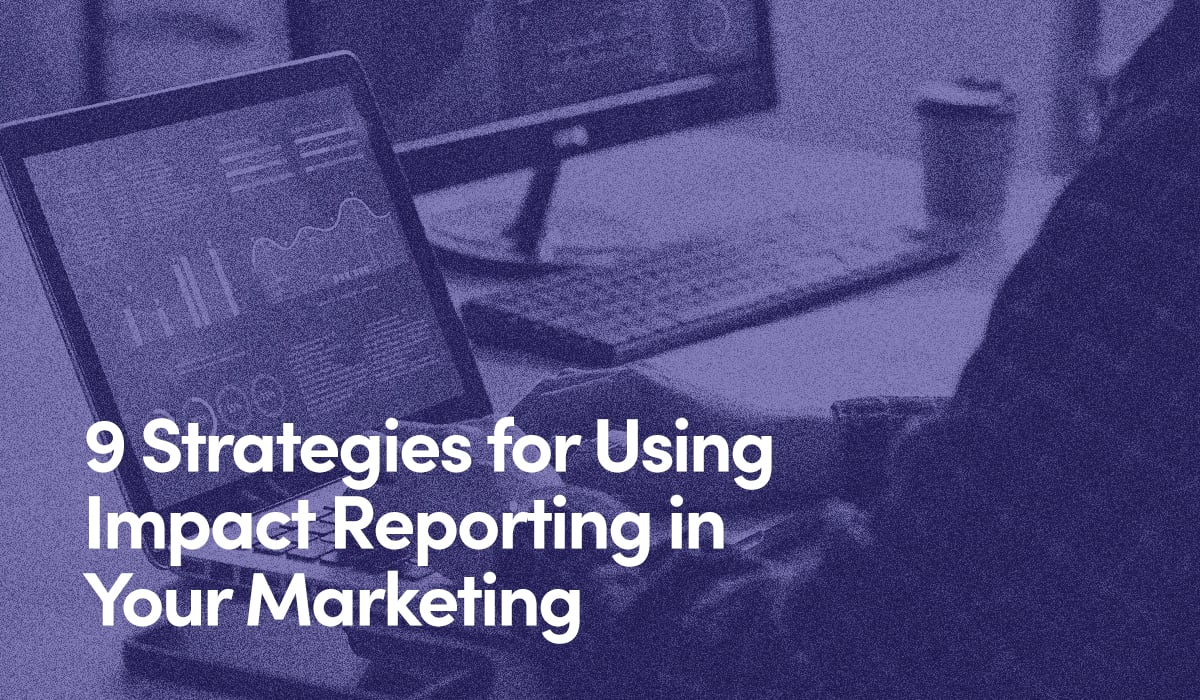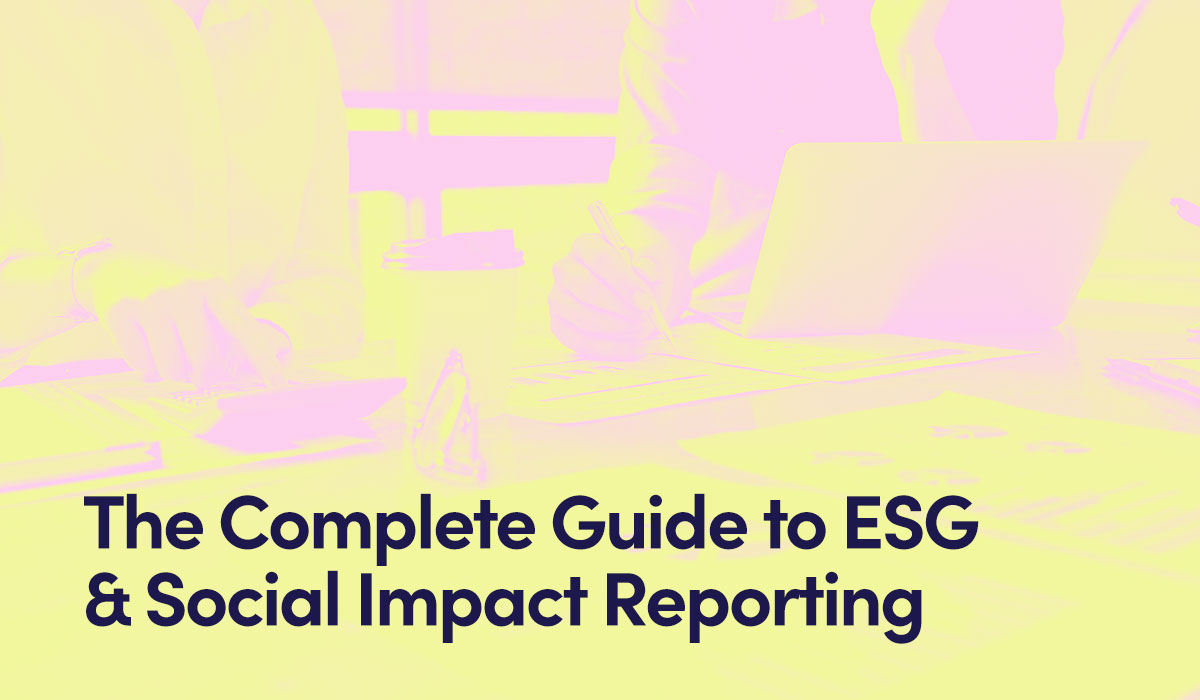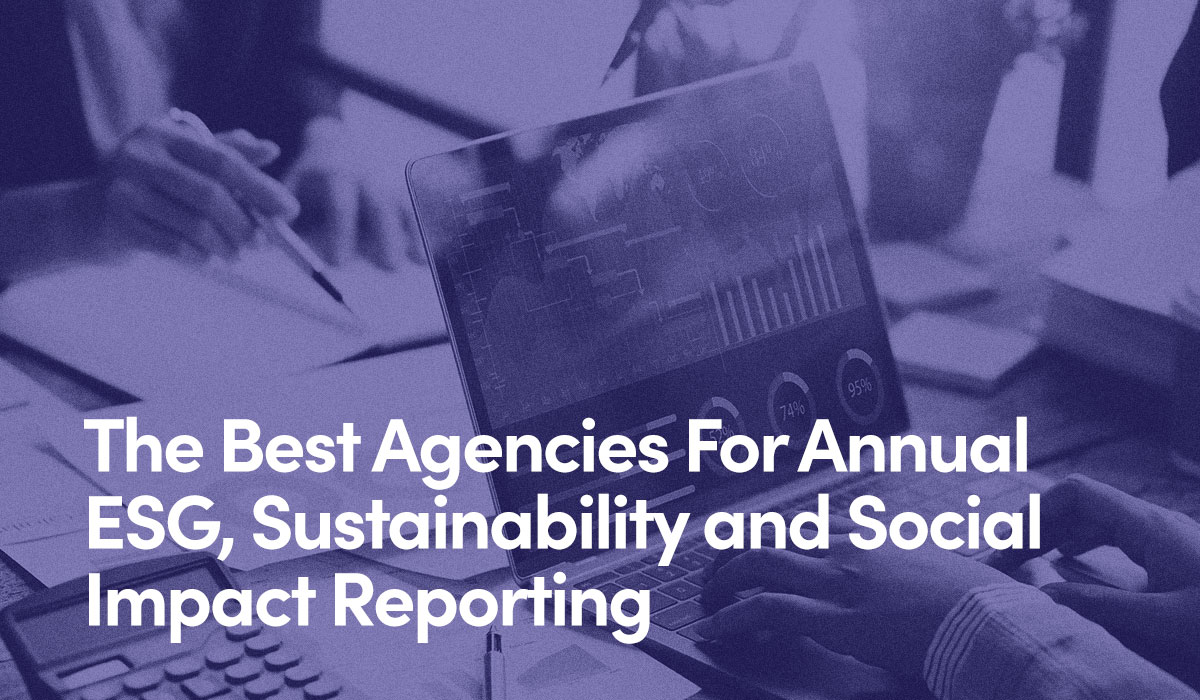Impact reporting has become essential to expanding the definition of business value to attract investment, talent, and customers. Social impact and Environmental, Social, and Governance (ESG) are two increasingly sanctioned approaches in this space.
Both focus on an organization’s impact on stakeholder groups beyond traditional shareholders and the communities within which it operates.
But despite good intentions, the brass tacks of measuring impact in these ways can be challenging, if not overwhelming.
Here are 14 key social impact and ESG metrics, and how to measure them.
Social Impact
Simply put, social impact captures a company’s effect on society, including its employees, customers, and communities. On the ground, this can cover a range of metrics. Here are just a few.
Company Metrics
1. Volunteer Hours
A simple way to create impact is with your time. Encouraging employees to donate a few hours a month to their favorite causes or a company-wide initiative can significantly benefit your community. Examples include offering free weekly resume-building classes for local adults, walking pets for homebound seniors, tidying the neighborhood park, or repainting playground facilities.
Measuring impact can be as simple as counting the number of volunteer hours logged or classes attended during a specific period. You could also consider the marginal number of interviews secured by your resume-class attendees over, say, six months.
2. Fair & Just Labor Practices
Employees are at the heart of any business, and their treatment一good or bad一will resonate throughout the organization and its wider stakeholder groups, including employee families and friends, communities, customers, shareholders, and others. Consider reporting on company policies and practices that support workers’ well-being and professional growth.
For example, include a statement if the company pays a Living Wage and policies on paid time off, floating holidays, gender pay parity, and healthcare contributions.
Social impact frameworks, such as B Lab’s B Corp certification, can provide relevant benchmarking data. In addition, linking policies to changes in employee turnover can also signal trends.
3. Diversity, Equity & Inclusion (DEI) Initiatives
Research supporting the notion that diversity within organizations leads to better business outcomes is not new (Harvard Business Review was one of the first to address this in 1996), but in practice, most organizations still have work to do. DEI must be fully integrated within a company’s core values, culture, and practices for all parties to benefit.
Here are a few ways to measure your progress:
- Take stock of your workforce diversity, including the number of employees in leadership positions. If all diverse employees are in entry-level positions, their contributions and progress are being thwarted.
- Compare the retention rate of diverse employees as compared to the organizational average.
- Review the number and type of incident reports. This can uncover disproportionate targeting of diverse employees, whether they feel comfortable reporting, and incident trends.
- DEI training has a positive impact, but it must be reinforced and practiced routinely for it to take hold一beyond a few ad hoc sessions. Both leadership and employee buy-in and participation are essential for the work required to effect organizational change.
- Include policies or training undertaken to eliminate implicit bias in hiring practices.
- As more and more aspects of our lives are conducted online, providing accessible digital content is an increasingly important part of the DEI journey. Include your organization’s accessibility policy, especially if it conforms to current global standards such as Web Content Accessibility Guidelines (WCAG) 2.1 AA.
4. Partnering With Social Impact Organizations
Providing direct financial support to a socially mandated organization can also provide positive social effects. Examples include environmental concerns, such as improving local biodiversity, for example, or expanding access to child development interventions for underserved communities.
Despite good intentions, the brass tacks of measuring impact in these ways can be challenging, if not overwhelming.
Environmental, Social & Governance (ESG)
ESG metrics evaluate a company’s performance and potential risks related to sustainability and ethical issues. Currently, ESG is the most comprehensive and transparent assessment of organizational societal impact and the global standard for non-financial reporting for large public companies. Of the legions of metrics available, some of the most common are provided below.
Environmental Metrics
5. Greenhouse Gas Emissions (GHG)
This measures how much GHG an organization emits from its business activities. GHG are organized into three categories or scopes, with Scope 1 and 2 emissions under the control or ownership of the organization. Scope 3 emissions include indirect emissions occurring in a business’s value chainーactivities it doesn’t control or own. GHG have varying global warming potentials and are converted into carbon dioxide equivalents (CO2e) for easier comparison.
Even small-scale improvements in GHG can be reported. For example, switching to more efficient appliances or installing sensors and intelligent lighting systems across workspaces.
6. Water Usage & Efficiency
Some water metrics focus on “usage,” the amount required for operations per period, or “consumption,” the portion of water usage not returned to its original source after being withdrawn. Generally, water usage and consumption are measured in cubic meters (M3). A related metric measures the volume of water required per unit of value created, such as annual water usage to revenues.
Water efficiency is measured using “water use intensity” (WUI), defined as the volume of water used across a given square footage (usually of a building) over time. WUI can identify trends and anomalies in efficiency across location, geography, season, or other criteria.
For smaller businesses, repairing leaky faucets, toilets, and irrigation components can make a meaningful difference in water consumption and efficiency. The Environmental Protection Agency (EPA) provides additional resources on water management practices.
7. Waste & Recycling
Efficient waste management can reduce your carbon footprint and operational costs and boost resource efficiency. Waste metrics center on the annual tonnage and composition of waste generated in a business’s operating activities or up or downstream in its value chain.
Waste composition generally is described as hazardous and nonhazardous, and processing can include disposal and disposal diversion. If waste is earmarked for disposal, it can be incinerated (with or without energy recovery), landfilled, or further processed. Waste diverted from disposal can be reused, recycled, or processed further for other purposes.
The more waste diverted from disposal and reused or recycled, the more efficient your waste management is.
Showcase Your Positive Impact on the World
Want to Connect With Values-Driven Consumers and Investors?
Amplify Your Story With Social Impact Reporting arrow_forwardSocial Metrics
Similar to standalone social impact reporting, the social component of ESG reporting covers an organization’s impact on its social and community environs. Social impact metrics described above are also commonly used for ESG reporting, such as labor practices, workforce diversity, philanthropy, and community engagement. Other metrics include the following:
8. Product Safety & Quality
This can be a more anecdotal form of reporting in which the complete lifecycle of a product is mapped (including design, raw material extraction, production, transport, and use) with impacted stakeholders identified throughout. The goal is to understand, report, and improve on the social impacts derived from the product. Positive impacts一with official certifications一can include local sourcing and manufacturing, fair-trade supply chains, sustainable or organic farming, recyclable packaging, and so on.
9. Customer Satisfaction & Privacy
Building affinity within communities, whether among your employees, customers, local, regional, or national neighbors, starts with trust. Reporting on policies and practices designed to foster trust with stakeholder groups illustrates the intention to be a good citizen and champion positive social impact.
For customers specifically, this can include investing in infrastructure and technology to protect their data and soliciting feedback and net promoter scores to better understand how they perceive the organization.
Social impact captures a company’s effect on society, including its employees, customers, and communities.
Governance Metrics
Governance metrics evaluate a company’s leadership and management practices, and standard measures include the following:
10. Board Structure & Diversity
Board structure refers to the composition and organization of a corporate board of directors. This can include the number of members, their roles and responsibilities, the selection and appointment process, and the governance framework guiding the board’s decision-making and accountability.
Board diversity can be measured across gender, race, ethnicity, age, education, professional experience, and other characteristics.
11. Executive Compensation & Incentives
Total compensation for executives can include base salary, bonuses, stock options, restricted stock shares, and other benefits. This can be compared to industry benchmarks to evaluate whether the company’s compensation program is competitive.
Another metric一the pay ratio一compares the CEO’s total compensation to the median employee’s total compensation, which can also provide insight into how executive compensation compares to industry averages.
Executive incentives based on performance metrics, such as revenue growth, earnings per share, or return on investment, illustrate if and how leadership goals align with those of the company. Clawback provisions, which enable the company to recover executive compensation under certain conditions, can discourage leadership from taking excessive risks or engaging in unethical behavior.
12. Shareholder Rights & Engagement
Measuring shareholder rights and engagement involves assessing whether shareholders have a voice in the company’s decision-making and strategic direction. Evaluating the strength of these provisions can provide insight into the level of shareholder protection and influence within the company.
Shareholder engagement programs are initiatives companies implement to facilitate shareholder dialogue, such as investor meetings, webcasts, and shareholder forums. The level of participation in these programs can indicate the status of shareholder engagement. Proxy voting, in which shareholders can vote on important corporate decisions, can also signify their level of interest.
13. Anti-Corruption & Transparency
Measuring anti-corruption and transparency efforts involves evaluating a company’s policies and practices. This generally includes reviewing anti-corruption programs, risk assessments, employee training and awareness programs, and commitment to continuous improvement.
14. Ethics & Compliance
Ethics and compliance involve evaluating if the company operates under ethical principles and legal requirements and the effectiveness of its policies, practices, and programs in promoting and enforcing ethical behavior. This can include a review of the quality, magnitude, and effectiveness of the company code of conduct, whistleblower systems, and internal controls.
Next Steps
Regardless of the framework used for non-financial reporting一social impact, ESG, or other一no business can report on every factor. Instead, it’s important to focus on the metrics that have material or significant impact on your stakeholders and communities.
Importantly, this varies from the definition of materiality in financial reporting, which measures whether the information in question would impact shareholders’ decisions to invest in the company.
At Hypha HubSpot Development we help businesses with non-financial reporting, from first considerations to publication and beyond. Learn more about our non-financial social reporting services and how we can help.




